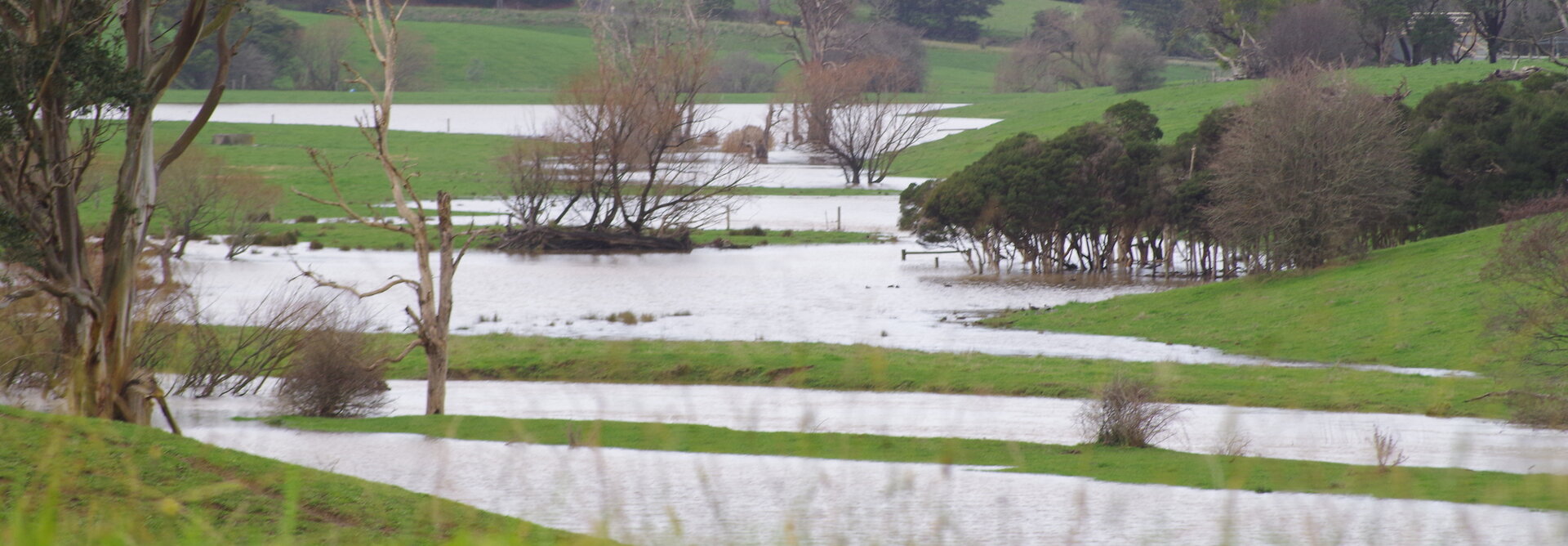We acknowledge the Traditional Owners of these lands and waters.
Yay!!! …for all the Landcare warriors who are quietly and effectively controlling weeds - including woody weeds like Willows, Sweet Pittosporum and Tree Tobacco ! Melissa and Luke appreciated the excellent job done by the West Gippsland Catchment Management Authority burning piled willows and then burying and smoothing the residue.
Congratulations also to Jindanook and Tarwin Valley Landcare Group foundation member Martin Stone for being Highly Commended in the 2019 Victorian Landcare Awards.
Salvage of cultural artefacts on the highway realignment has been completed and we look forward to learning more when the results have been written up. Prior to commencement of works (starting date expected to be announced very soon), Major Road Projects Victoria has been monitoring water quality at several sites.
Nerrena Tarwin Valley Landcare Group’s 3 bird recording sites are now live on Bird Life Australia’s BIRDATA APP so that any interested person can record their sightings.
https://birdata.birdlife.org.a... https://birdata.birdlife.org.a... https://birdata.birdlife.org.a...
To celebrate this and Landcare Week, eight of us met at Koonwarra Recreation Reserve for our September bird monitoring walk and festive afternoon tea. We heard our first Fan-Tailed Cuckoo for the spring. I’ve included some general nature observations below but systematic monitoring by many people will provide much more accurate, detailed and useful information over time.
South Gippsland Bird Observers invited NTV Landcare President Sue and I to discuss the Black Spur Creek Wetland Project at their Foster meeting. Not only does the Rail Trail provide easy access to a variety of bird habitats, but our project area includes the Koonwarra Fossil Beds which give unique insights into bird evolution about 120 million years ago. Our Landcare Group has been successful in obtaining funds for a bird monitoring interpretative sign through Victorian Landcare Grants 2019-20. The sign is to be erected on the Rail Trail and is part of a larger “Making the Tarwin Terrific Again” project which will include revegetation and bird monitoring on private farms.
Over the past few months, we’ve noticed mistletoes flowering on trees near the Black Spur Creek wetlands. Mistletoes are only semi-parasitic. They have chlorophyll in their leaves and can photosynthesise their own food so they rely on the host mostly for support and moisture and a few nutrients. They don’t usually kill their host but do tend to colonise trees already stressed by other factors including old age and exposure. Mistletoes are native ever-green plants and have been shown to greatly increase biodiversity by providing food and shelter and diversifying forest floor nutrients. The flowers, nectar, fruit and foliage are all highly nutritious and benefit koalas, sugar gliders, possums, birds and insects. They have a special mutually beneficial relationship with the delightful little Mistletoe bird which eats the fruit and deposits the sticky seed on branches. The seed germinates quickly and sends a root (haustoria) into the outer layers of the host branch.
At least once a week I walk the Rail Trial between the Koonwarra Recreation Reserve and Minns Road. Of course the birds vary each time and according to the weather and season - but still some patterns emerge. I notice I pass through different zones.
The first stretch of the rail trail is eucalypt forest with quite diverse understory plants including Tree Violet. The birds here are many and varied and often too high in the tree tops for me to identify. They include parrots, cuckoos, wattlebirds and honeyeaters. I see lots of little birds – Blue Wrens, Grey Fantails, various Thornbills, Pardalotes, Varied Sittella, Red Browed Finches, Scrub Wrens, and White-throated Tree Creepers.
There is the occasional European Blackbird which spreads and inhabits Sweet Pittosporum trees. Those two species favour each other to the exclusion of other birds and plants.
Approaching the wetlands, I may be lucky enough to hear or see the very beautiful Sacred Kingfishers perched on a branch. I see Kookaburras and sometime a Swamp Harrier.
Yellow Tailed Black Cockatoos feast on highly nutritious wood-boring grubs which they gouge out of wattle tree trunks with their powerful bills. In the absence of more hakeas and banksias, they’ve also adapted to feed on the pinecones near Minns Road.
If the wetlands have water I might see Black Swans, Coots, Dusky Moorhens, Egrets, Cormorants, Ibis Herons, Spoonbills and various ducks. I’m alert for platypus sometimes seen from the Tarwin River bridges.
More ducks and waterbirds congregate on the river flats. This open grazed country also favours common farmland birds such as magpies, swallows (probably nesting under the bridges) and the introduced starling. Galahs and Little Corellas fly over head.
Stark dead trees at the third bridge have ideal perches for Dusky Wood Swallows and Black Faced Cuckoo Shrikes and birds of prey such as Black Shouldered Kites and Peregrine Falcons. A gorse infestation down the river bank provides habitat for wrens and New Holland Honeyeaters. This reminds me of the importance of planting many native understory plants such as Prickly Moses wattle when replacing weed infestations.
Approaching Minns Road there are more European Blackbirds in an avenue of Sweet Pittosporum but there are also some remnant eucalypts, tussocks, swordgrass, Kangaroo Apples, Blackwoods and Silver Wattle. The wattle trees of all ages, from sapling to old fallen decaying trunks, seem to encourage many birds. Here I more frequently see Yellow Robins, Golden and Rufous Whistlers and the Grey Butcher Bird.
Over the years, Blue Tongue lizards, wallabies, echidnas, snakes, koalas, wombats, Swamp Rats, and Sugar Gliders have been sighted.
Kate Walsh, project officer.

